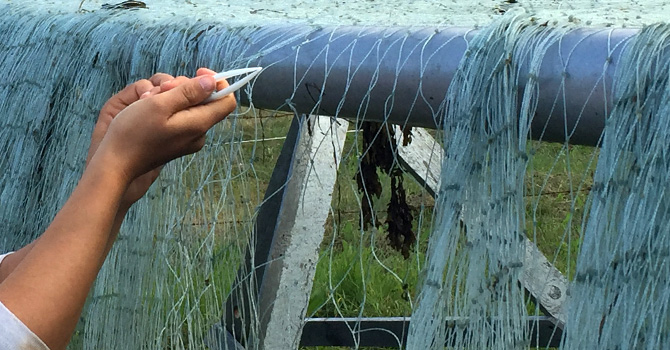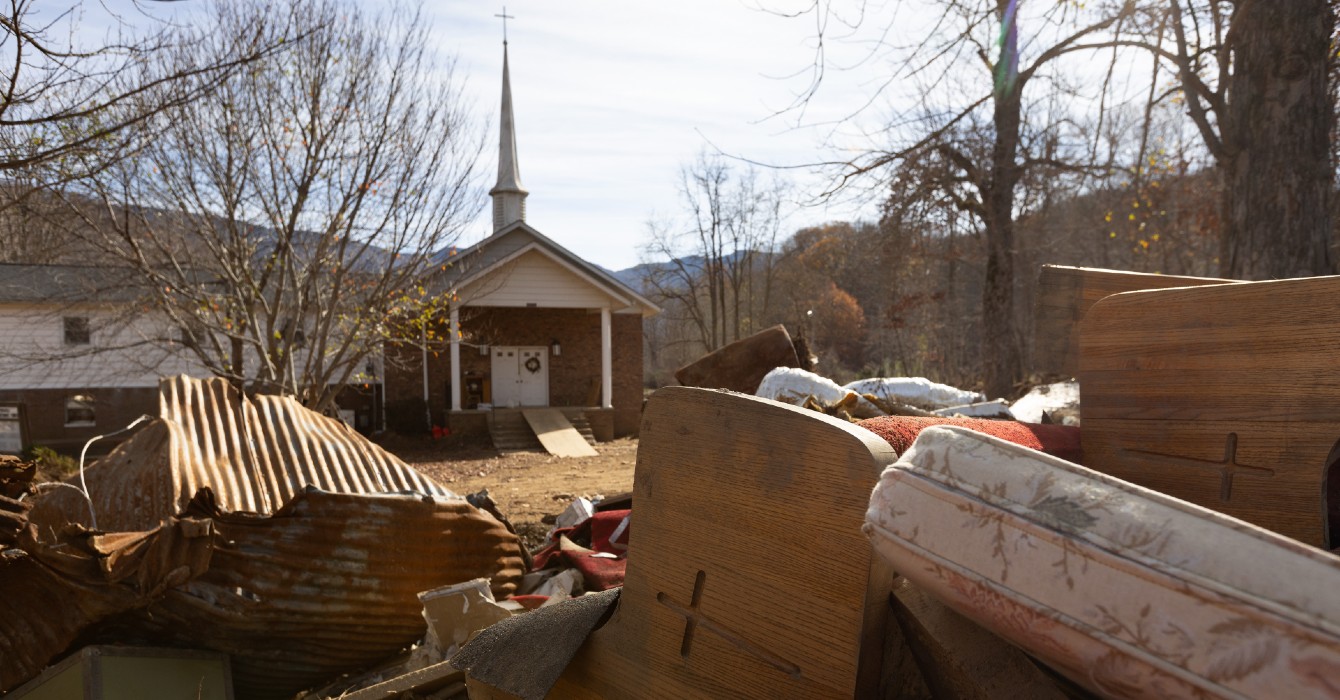The two knitters sat only four pews back and right on the aisle. I watched as they moved their fingers and needles deftly through the prayers, through the anthem, through the sermon.
I watched these audacious women closely. Their indiscreet shopping bags of multicolored yarn filled the pew space and floor space around them. I wondered: Were they working on afghans? Sweaters? Clearly, they couldn’t imagine their hobby as sacrilege, and indeed it drew no sidelong glances.
Was it really OK to knit in church?
Soon, I brought a small bag with a fingerless mitt I’d been knitting and pulled it out during the offertory. Soon, others joined in. Colorful balls of yarn dotted the pews, and the beginning of worship would be met with slender needles slipping into hands around the sanctuary. Handwork was becoming a silent cultural piece of the church.
Crafting, be it knitting or crochet, embroidery or whittling, was already popular before the pandemic, and 2020 brought skyrocketing demand for supplies and instruction in traditional skills. As technology separates us from many of the details of our daily needs, some people are returning to the basics of creating handmade sweaters, napkins, spoons — some of life’s essential objects.
Olympic diver Tom Daley caught media attention for his handwork in the stands of the 2020 Tokyo Olympics; he even credited his gold medal to knitting.
In his book “Made With Love: Get Hooked With 30 Knitting and Crochet Patterns,” he writes, “It was the calmness and focus that knitting provided me when sitting up in the spectator stands between events, that helped to stop my mind spiralling into anxious thoughts and stay present in the moment, aided by the rhythmic movement of the stitches in my hands.”
The same year Daley won his gold, I took a break from church work and was homeschooling my 6- and 4-year-olds. I used knitting to keep my Type A personality in control while they played on playgrounds and ran in the yard.
The feel of the wool in my hands, the pleasure of the colors and the small bits of learning soothed me. That time was chaotic, but I could count on having a sweater or a hat or a pair of fingerless mitts in a few days or weeks or months. Handwork trains us in the practice of delayed satisfaction.
Later, I served a church as a minister of education and sat knitting in the front pew during a service in which I had no leadership role. After worship, a member of the choir approached me to let me know that she found my knitting shameful. Maybe it was because I was robed or maybe because I was young and managing my children as well, but whatever the reason, she was horrified by my handwork. I tried to explain that I’d learned to knit in church from the matriarchs of another congregation and that knitting attuned my focus. She huffed off.
I wonder why more extraordinary knitters don’t bring their projects to church. Is it work they feel they must set aside on Sundays? Is it just not done?
What do we do with our bodies in church? Christianity has long had suggestions, if not decrees, that seem to have trickled down to the expectation of our bodies in worship. Rooted in white, New England Congregationalism, the tradition seems to be that it is not our bodies that worship is designed for. With hard wooden pews and services that invite little movement, our bodies in worship are forced to endure restlessly the most uncomfortable sitting of the week.
I also started teaching handwork during the pandemic. I worked with small groups of elementary-age students who made their own knitting needles and then knitted elephants. It takes a long time to knit an elephant, especially when you’re 7, but the perseverance and the practice of delayed gratification were rewarded at the end with a toy they’d created.
In my pandemic time away from church work, and in this age when clergy are encouraged to rethink church, I’ve found myself wondering what a makes a church. We know that church is more than a building, more than Sunday morning gatherings. I look at community yarn shops, where people gather to learn time-honored skills. My local fiber shop even supports social action. I would say that Jesus is necessary, but I seldom find Jesus absent from places where people come together to love each other and the world more fully.
Once I led a confirmation retreat for a regional church body in which I taught preteens how to make simple cellphone pouches with embroidery floss and fabric. The pouches were intended as resting places for their phones during intentional respites from technology.
At first, the students were quiet and hesitant. Once presented with the concept and materials, though, they were noisy and engaged, picking colors and talking design. They returned during breaks and after meals to continue working! Conversations bubbled up as we sewed, as they have for hundreds of years while people work. I noticed that connections developed more organically and with greater depth at these times than during the rest of the retreat.
With the resurgence of interest in craft, I wonder how churches can engage or encourage this work with our hands. After all, we gather to celebrate, remember and evoke a craftsman whose hands were trained on wood long before his ministry began. I wonder, in this age of technology and touch screens, how engaging with natural materials and making things with our own hands might help us be more fully incarnate and in turn celebrate a God who blessed our bodies by Godself becoming enfleshed.
As people flock to knitting and crochet, embroidery and woodworking, I wonder: Could the soft click of needles remind us of rosary beads? Could touching a shorn woolen fleece or stroking a piece of sanded wood help us better understand the textures of the ancient world in which so much Scripture is rooted? Could the art of mending — repairing the world, in microcosm — cultivate in us not only resilience but the certainty that what is broken can be made whole once again?
The food movement has reminded us that our food comes from soil and seeds and animals. Handwork reminds us that we can affect our environment and create real and useful objects — a stuffed toy, a cellphone pouch, a table. Through handwork, I feel empowered to make and create and to offer not only what’s needed but something that’s beautiful as well.
As we look ahead to the future of the church, I think about handwork. We need people who know beauty, who have patience to make something new even if it takes learning and time.
The matriarchs who introduced me to knitting in church startled me with their boldness, but their knitting told me that something different was happening in that church. It was a welcome that extended beyond words.
What do we do with our bodies in church?




















